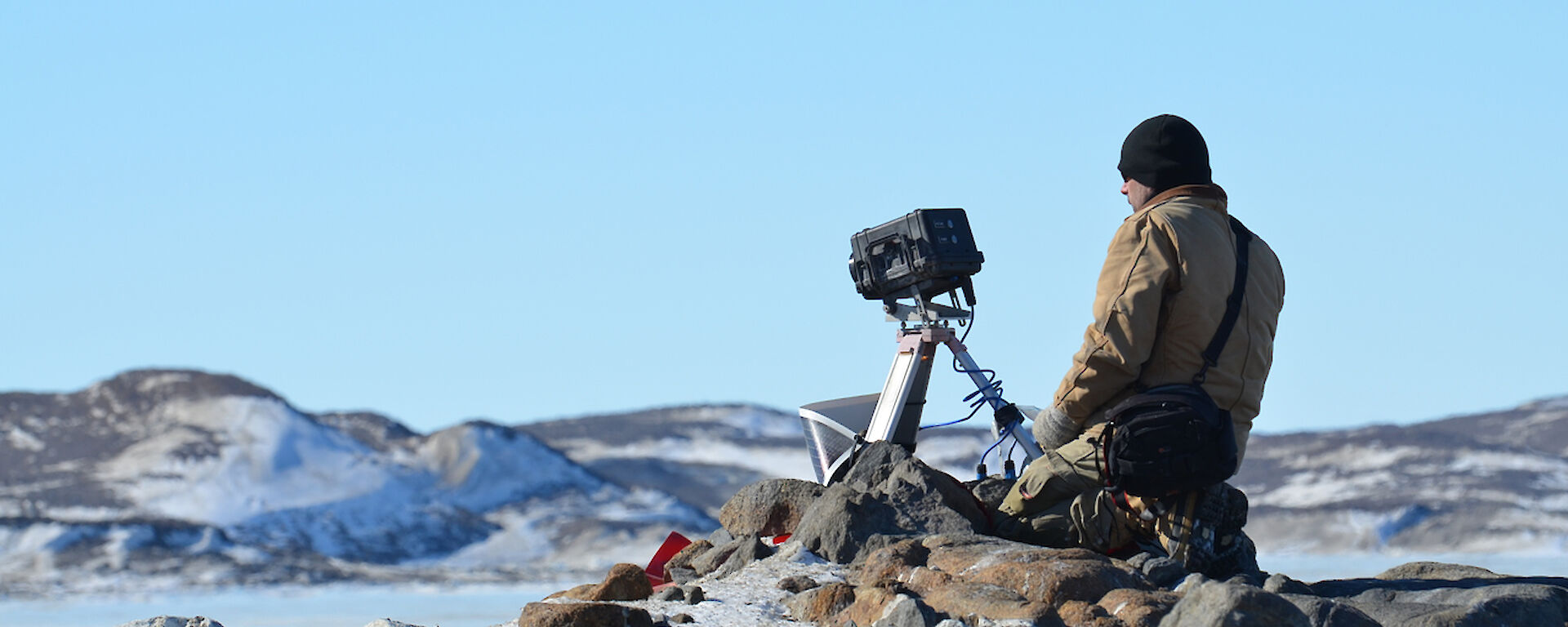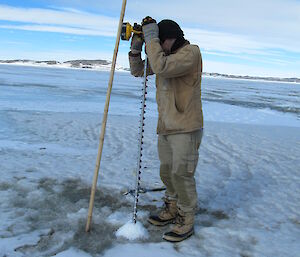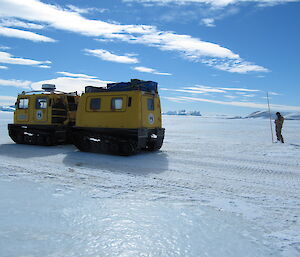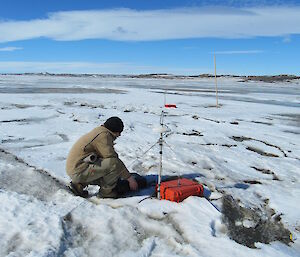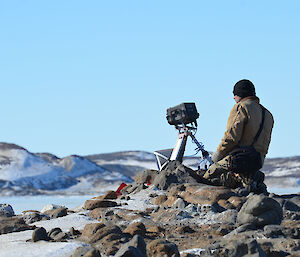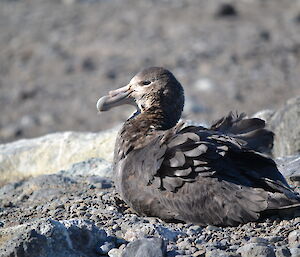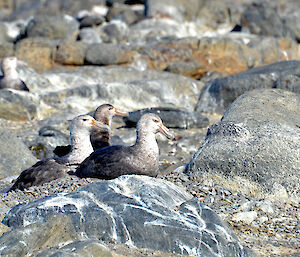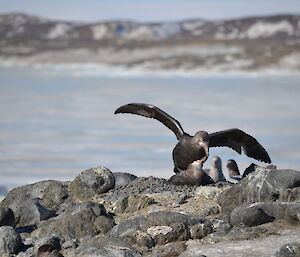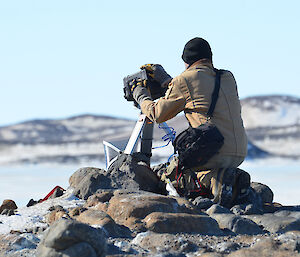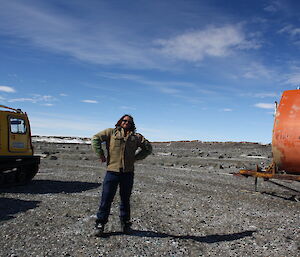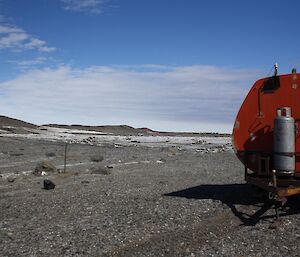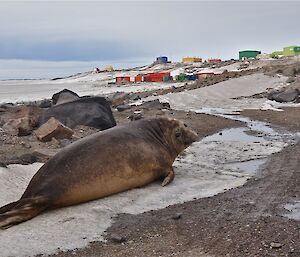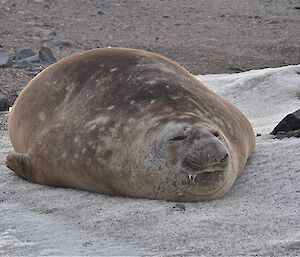Throughout the winter, the sea ice is drilled weekly and a record is kept of the thicknesses at seven localities. While this task provides information for a long-term monitoring project on sea ice dynamics, it also tells us at this time of year about the condition of the ice for operational use.
- Is it still growing?
- Is it thick enough to drive heavy vehicles on?
- Is it softening or becoming sea water saturated?
The sea ice is the way we can easily access the Vestfold Hills and the plateau through the winter so the longer we can use it the better.

